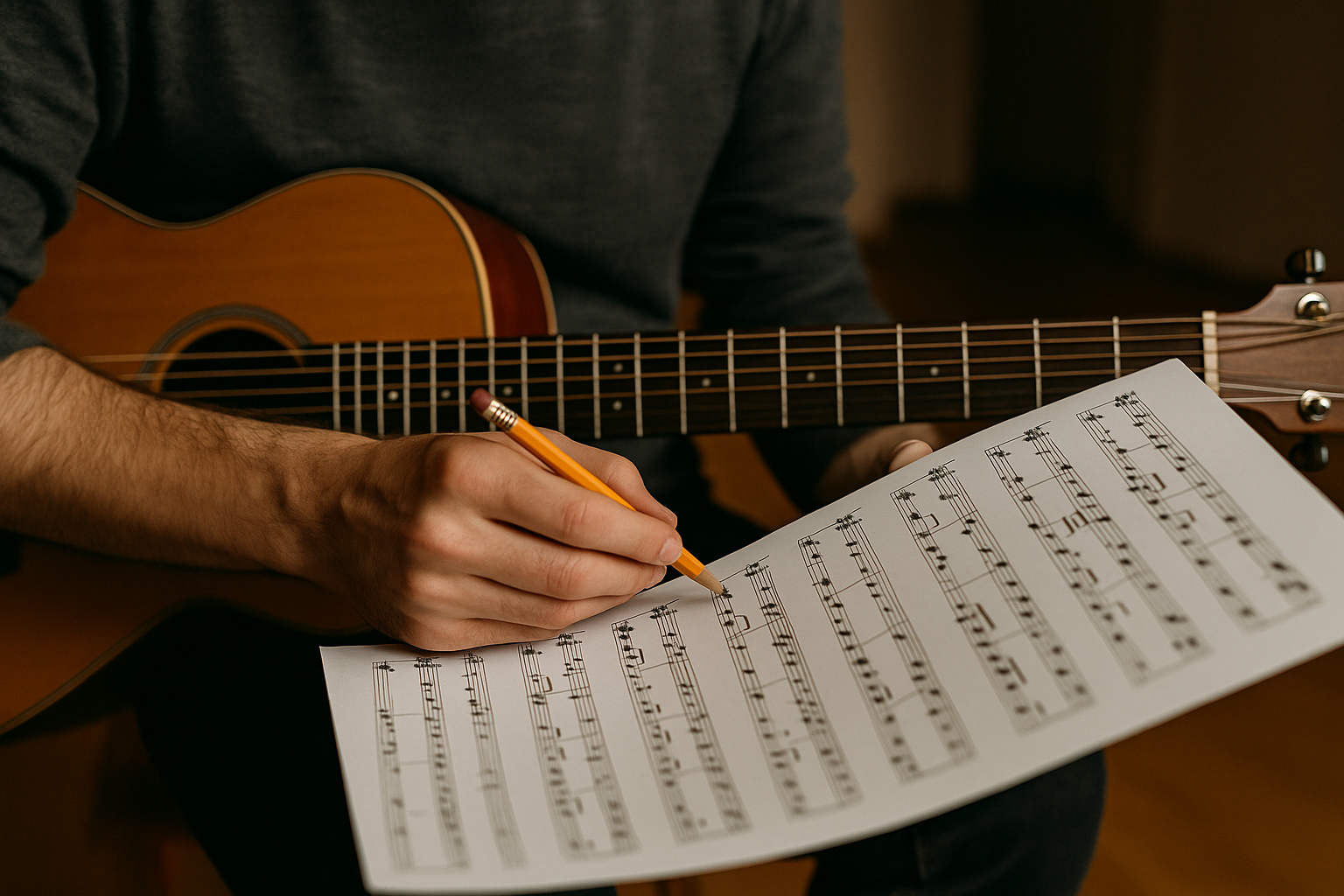Every piece of music, from a simple children’s song to a complex symphony, is built on patterns. These patterns might be rhythmic, harmonic, melodic, or structural. For beginner musicians, recognizing these recurring elements can feel like unlocking a secret code. Suddenly, learning songs becomes easier, improvisation makes more sense, and composition feels less mysterious.
In this article, we’ll explore what musical patterns are, why they matter, and how to train your ear and mind to recognize them across different songs and styles.
What Are Musical Patterns?
A musical pattern is any repeated or predictable structure in music. Examples include:
- Rhythmic patterns: A repeated drum beat or syncopated rhythm.
- Harmonic patterns: Chord progressions like I–IV–V–I in classical or I–V–vi–IV in pop.
- Melodic patterns: A short sequence of notes repeated higher or lower.
- Structural patterns: Verse–chorus–verse forms in popular songs.
Recognizing these patterns turns music from a random sequence of notes into an organized and understandable structure.
Why Recognizing Patterns Matters
1. Speeds Up Learning
Once you notice that many songs use the same chord progression, you don’t have to learn each from scratch.
2. Improves Memory
Patterns make music easier to remember because the brain naturally recalls repeated structures.
3. Aids Improvisation
Improvisers rely on recognizing chord progressions and rhythmic motifs to create coherent solos.
4. Enhances Composition
Composers use patterns as the foundation for building pieces, whether repeating rhythms or developing themes.
5. Deepens Listening Skills
Listening becomes more meaningful when you notice recurring ideas across genres.
Common Types of Patterns in Songs
Rhythmic Patterns
Rhythm drives music forward. Many genres rely on specific rhythmic patterns:
- Rock: Steady backbeat on beats 2 and 4.
- Blues: Shuffle rhythm.
- Latin music: Clave patterns such as the son clave.
- Pop: Syncopated drum loops.
Harmonic Patterns
Chord progressions are one of the most important patterns:
- Classical: I–IV–V–I (tonic–subdominant–dominant–tonic).
- Pop/Rock: I–V–vi–IV (used in countless hits).
- Blues: 12-bar blues progression.
- Jazz: ii–V–I progression.
Melodic Patterns
Melodies often repeat in sequences:
- Ascending or descending stepwise patterns.
- Repetition of a short motif at higher or lower pitches.
- Call-and-response between phrases.
Structural Patterns
Songs are rarely random. Common forms include:
- Binary (AB) – two contrasting sections.
- Ternary (ABA) – first section returns after a contrasting one.
- Verse–Chorus–Bridge – the foundation of modern pop music.
Exercises to Recognize Patterns
1. Clap Rhythms
Listen to a song and clap along with the rhythm. Notice repeated beats or syncopations.
2. Write Down Chords
Even if you don’t know theory deeply, listen for when chords repeat. Many songs use loops of four chords.
3. Sing Short Motifs
Identify a small part of the melody and sing it whenever it reappears.
4. Map the Song Structure
Write down the sequence of sections: intro, verse, chorus, bridge. See how often parts repeat.
5. Compare Different Songs
Pick two songs and notice if they share chord progressions or rhythmic ideas.
Patterns in Different Genres
Classical
Patterns appear in motifs developed throughout symphonies. Beethoven, for example, builds entire movements from a simple four-note pattern.
Jazz
Improvisation is based on recognizing chord changes (like ii–V–I) and rhythmic motifs.
Blues
The 12-bar progression and call-and-response phrases are key patterns.
Pop
Repetition dominates: four-chord loops, repeated choruses, and hooks designed to stick in memory.
Folk
Simple melodic and rhythmic patterns allow songs to be sung and remembered easily.
How Recognizing Patterns Improves Practice
Faster Learning
If you notice that a new piece uses the I–V–vi–IV progression, you already know most of the song.
Stronger Ear Training
Recognizing intervals and chord changes by ear becomes easier with repeated exposure.
More Confident Improvisation
When you know the underlying progression, you can create melodies that fit naturally.
Better Memorization
Patterns act like shortcuts in your brain, making it easier to recall entire pieces.
Common Mistakes When Studying Patterns
- Overlooking Simple Structures – Beginners often think every song is unique, ignoring common progressions.
- Relying Only on Sheet Music – Focusing on notes without listening prevents recognition of patterns.
- Forgetting Rhythm – Many focus only on chords or melody, but rhythmic patterns are equally important.
- Trying to Memorize Every Detail – Instead of memorizing note by note, look for repeated sections.
Tips for Building Pattern Recognition Skills
- Listen Actively: Pay attention to one element at a time.
- Practice in Small Steps: Start with simple songs before tackling complex works.
- Use Technology: Apps can slow down music so you can hear patterns clearly.
- Keep a Journal: Write down progressions, rhythms, or motifs you recognize.
- Play by Ear: Challenge yourself to play familiar patterns without sheet music.
Long-Term Benefits of Pattern Recognition
- Accelerated learning speed.
- Greater confidence in improvisation and composition.
- Improved ear training and memory.
- Ability to connect music across genres.
- Deeper appreciation for how songs are built.
Final Thoughts: Patterns as the Language of Music
Music may seem infinite in variety, but much of it is built on familiar patterns. Recognizing these patterns is like learning the grammar of a language—it makes communication easier, clearer, and more creative.
For beginners, focusing on patterns reduces frustration and accelerates growth. For experienced musicians, it provides insight into composition and performance.
So the next time you listen to or learn a new song, don’t just memorize notes. Ask yourself: What patterns do I hear? Where do they repeat? How do they connect? By answering these questions, you’ll transform the way you learn, play, and understand music.
